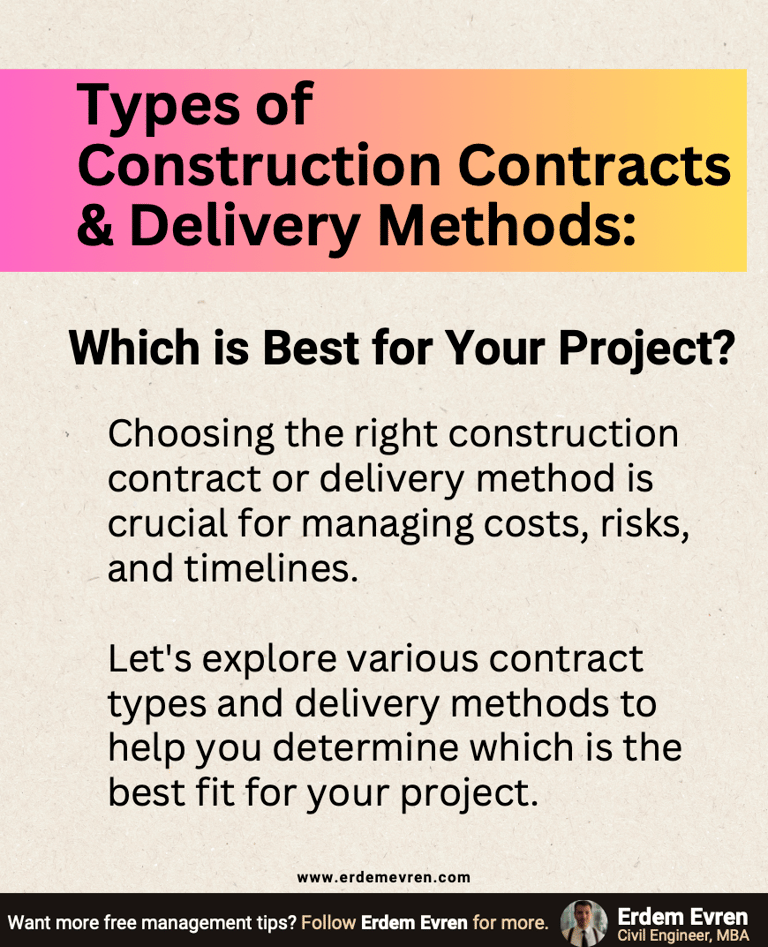Types of Construction Contracts: Pros & Cons Explained
Concise yet insightful!


🚧 Choosing the Right Construction Contract & Delivery Method for Your Project 🚧 When it comes to construction, selecting the right contract or delivery method is crucial for managing costs, risks, and timelines.
Here’s a quick breakdown of the most common types:
🔹 Lump Sum (Fixed Price)
Best for well-defined projects. Predictable costs but limited flexibility if changes occur.
🔹 Cost-Plus
Great for projects with uncertain scope. Offers flexibility but can lead to higher costs if not managed carefully.
🔹 Time and Materials (T&M)
Ideal for smaller projects or those with unpredictable scopes. Allows flexibility but requires careful cost monitoring.
🔹 Unit Price
Best for projects with measurable quantities (e.g., roads, utilities). Pricing is clear but depends on accurate unit estimates.
🔹 Design-Build
One entity handles both design and construction. Faster project timelines but less control over the design phase.
🔹 Design-Bid-Build
Traditional approach where design and construction are contracted separately. Provides more control over design but can be slower.
🔹 Guaranteed Maximum Price (GMP)
Offers cost control with a set maximum price. Reduces owner risk but may incentivize contractors to cut corners.
🔹 Integrated Project Delivery (IPD)
Highly collaborative, sharing risks and rewards among all parties. Best for complex projects but requires sophisticated contract management.
🔹 Construction Management at Risk (CMAR)
The construction manager acts as a consultant during design but takes on risk during construction. Suitable for large, complex projects with the need for expert oversight.
